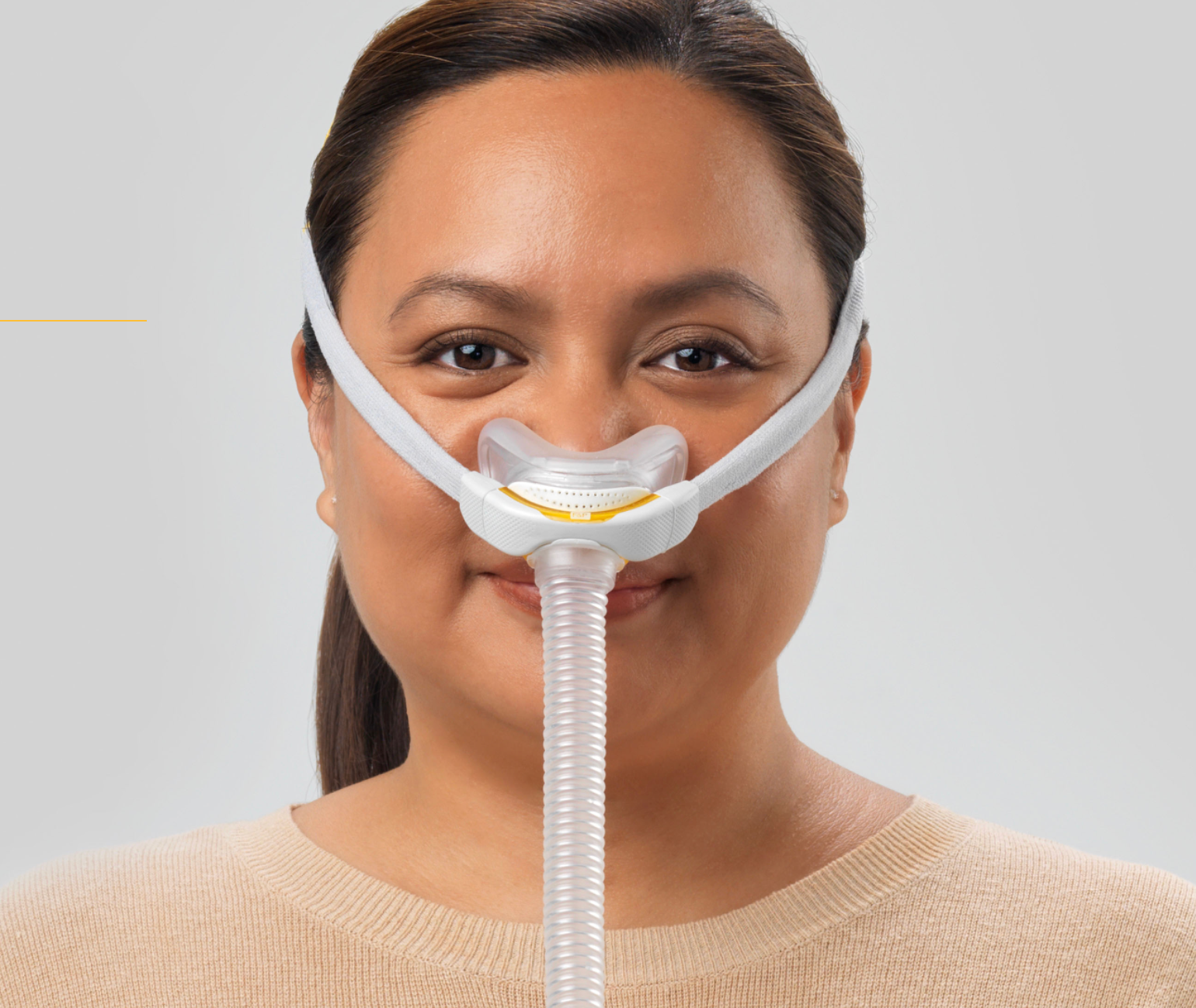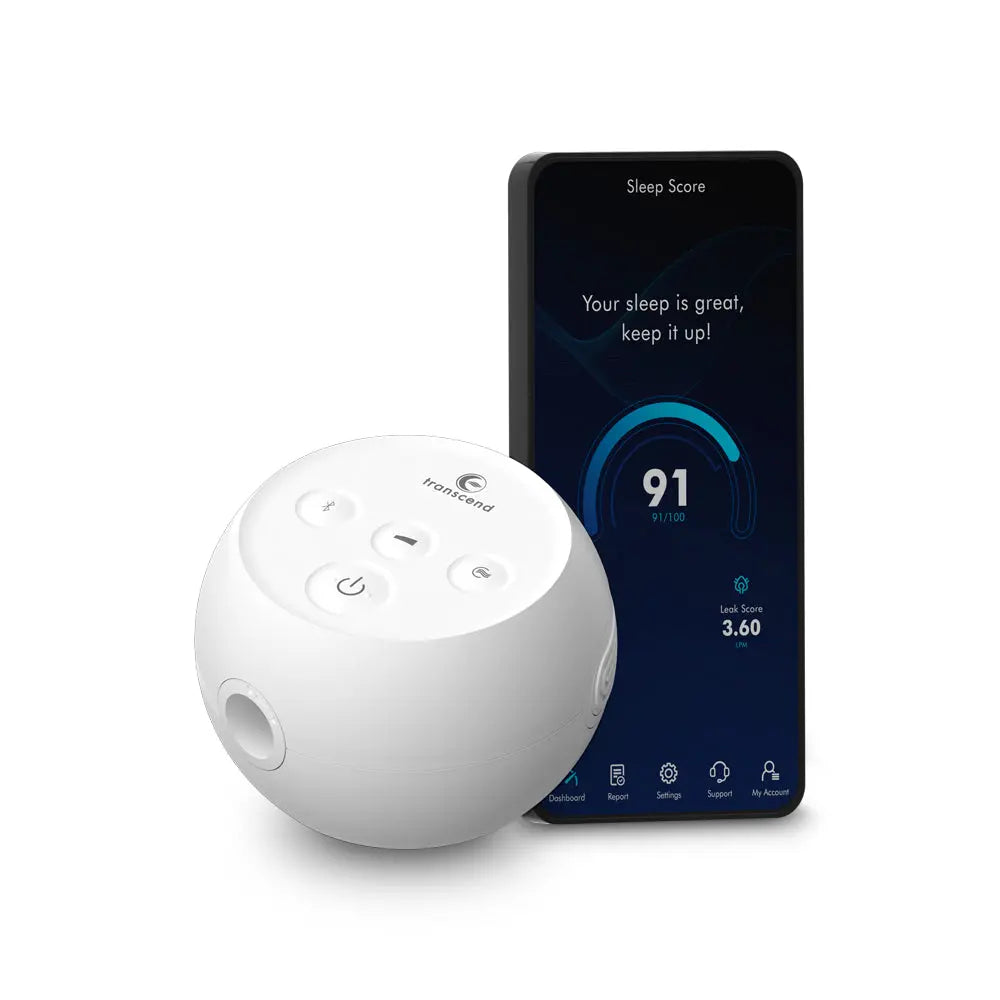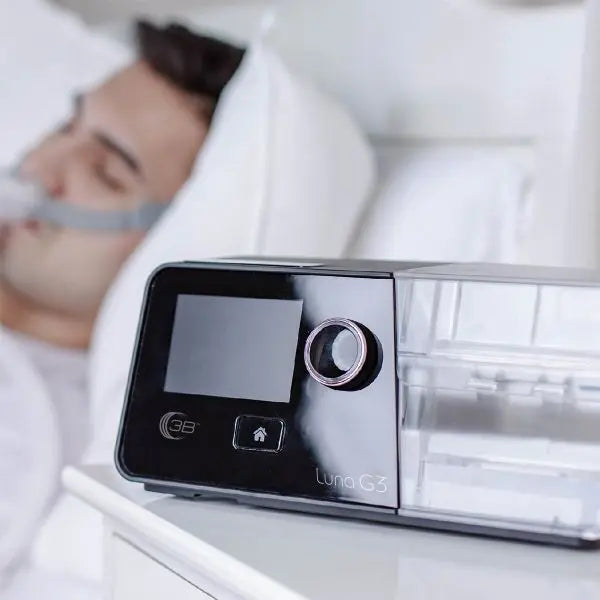The Importance of Changing Your CPAP Supplies Regularly
Continuous Positive Airway Pressure (CPAP) therapy is a life-changing treatment for millions of people diagnosed with sleep apnea, a condition that causes repeated interruptions in breathing during sleep. By delivering a steady stream of air through a mask, CPAP machines help keep airways open, ensuring restful sleep and reducing the risks associated with untreated sleep apnea, such as heart disease, stroke, and daytime fatigue. However, the effectiveness of CPAP therapy hinges not only on consistent use but also on proper maintenance of the equipment. One critical aspect of this maintenance is regularly changing CPAP supplies, including masks, filters, tubing, and humidifier chambers. Neglecting to replace these supplies can compromise the therapy’s efficacy, pose health risks, and reduce the overall comfort of the treatment.
This comprehensive blog post explores why changing your CPAP supplies regularly is essential, delving into the health, performance, and comfort implications of timely replacements. We’ll cover the science behind CPAP therapy, the role of each component, recommended replacement schedules, and practical tips for maintaining your equipment. By the end, you’ll understand why regular replacement of CPAP supplies is not just a recommendation but a necessity for optimal health and therapy success.
Understanding CPAP Therapy and Its Components
Before diving into the importance of changing CPAP supplies, it’s helpful to understand how CPAP therapy works and the role each component plays in the system. CPAP therapy is designed to treat obstructive sleep apnea (OSA), a condition where the airway collapses or becomes blocked during sleep, leading to pauses in breathing. These pauses, known as apneas, can occur dozens or even hundreds of times per night, disrupting sleep and reducing oxygen levels in the body. CPAP machines counteract this by delivering a continuous flow of pressurized air through a mask, which acts as a pneumatic splint to keep the airway open.
A typical CPAP setup includes the following components:
-
CPAP Machine: The core device that generates and delivers pressurized air. It houses the motor, fan, and electronic components that control air pressure settings.
-
Mask: The interface between the machine and the user, delivering air directly into the nasal passages or mouth. Masks come in various styles, including nasal, full-face, and nasal pillow masks.
-
Tubing: A flexible hose that connects the CPAP machine to the mask, allowing air to flow from the machine to the user.
-
Filters: Disposable or reusable filters that purify the air entering the CPAP machine, removing dust, allergens, and other particles.
-
Humidifier Chamber: An optional component that adds moisture to the air to prevent dryness in the nose, mouth, and throat.
-
Headgear and Chinstraps: Accessories that secure the mask in place and ensure a proper fit during sleep.
Each of these components plays a vital role in the effectiveness of CPAP therapy, and their condition directly impacts the quality of treatment. Over time, wear and tear, bacterial buildup, and reduced functionality can compromise these components, making regular replacement critical.
Why Regular Replacement of CPAP Supplies Matters
Changing CPAP supplies regularly is not just about maintaining equipment—it’s about safeguarding your health, ensuring therapy effectiveness, and enhancing comfort. Below, we explore the key reasons why timely replacement is essential.
1. Maintaining Hygiene and Preventing Infections
CPAP equipment comes into direct contact with your face, mouth, and airways, creating an environment where bacteria, mold, and other pathogens can thrive if not properly maintained. The warm, moist conditions inside masks, tubing, and humidifier chambers are particularly conducive to microbial growth. Without regular cleaning and replacement, these components can become breeding grounds for harmful organisms, increasing the risk of respiratory infections, sinus issues, and other health complications.
-
Masks: The mask, which sits on your face for hours each night, can accumulate skin oils, sweat, and bacteria. Over time, these contaminants can irritate the skin, cause acne, or even lead to infections. A worn-out mask may also develop micro-tears or cracks, allowing bacteria to penetrate deeper into the material.
-
Tubing: CPAP tubing can harbor moisture, especially if you use a humidifier. This moisture can foster mold and bacterial growth, which may be inhaled during therapy if the tubing is not replaced regularly.
-
Filters: Filters are designed to trap dust, pollen, and other airborne particles before they enter the CPAP machine. Over time, filters become clogged, reducing their effectiveness and potentially allowing contaminants to pass through into the airstream.
-
Humidifier Chambers: The water in humidifier chambers can become a breeding ground for mold and bacteria if not cleaned and replaced regularly. Contaminated water can aerosolize during therapy, leading to inhalation of harmful pathogens.
Regularly replacing these supplies reduces the risk of infections and ensures that the air you breathe during therapy is clean and safe. For individuals with compromised immune systems or respiratory conditions, this is especially critical.
2. Ensuring Optimal Therapy Effectiveness
The primary goal of CPAP therapy is to maintain open airways and prevent apneas, but worn-out supplies can compromise this objective. Each component of the CPAP system must function properly to deliver the prescribed air pressure consistently. When supplies degrade, therapy effectiveness diminishes, potentially leading to a return of sleep apnea symptoms such as snoring, daytime fatigue, and poor concentration.
-
Masks: A mask that no longer seals properly due to worn-out cushions or headgear can cause air leaks. These leaks reduce the air pressure delivered to the airway, allowing apneas to occur. Leaks can also disrupt sleep by causing noise or discomfort, leading to non-compliance with therapy.
-
Tubing: Cracks, kinks, or blockages in tubing can obstruct airflow, reducing the pressure delivered to the mask. This can result in suboptimal therapy and a return of symptoms.
-
Filters: Clogged filters restrict airflow into the CPAP machine, which can lower the output pressure and affect the machine’s ability to maintain consistent therapy levels.
-
Humidifier Chambers: A damaged or worn-out humidifier chamber may not maintain proper water levels or heat effectively, leading to inadequate humidification. This can cause dryness, nasal congestion, or discomfort, which may discourage consistent CPAP use.
By replacing supplies according to recommended schedules, you ensure that your CPAP system delivers the prescribed therapy effectively, reducing the risk of untreated sleep apnea and its associated health consequences.
3. Enhancing Comfort and Compliance
Comfort is a critical factor in CPAP therapy compliance. If the equipment is uncomfortable or causes irritation, users are less likely to use it consistently, which undermines the benefits of treatment. Worn-out supplies can lead to discomfort in several ways:
-
Masks: Over time, mask cushions lose their elasticity, leading to poor seals and increased leaks. This can cause air to blow into the eyes or onto the face, creating irritation or dryness. Worn headgear may also stretch, causing the mask to slip or feel unstable during sleep.
-
Tubing: Stiff or cracked tubing can become less flexible, making it harder to position the CPAP comfortably during sleep. This can lead to tugging on the mask, disrupting sleep and reducing compliance.
-
Humidifier Chambers: A malfunctioning humidifier chamber may not provide adequate moisture, leading to dry mouth, throat irritation, or nasal congestion. These symptoms can make CPAP therapy feel unpleasant, discouraging regular use.
Replacing supplies ensures that your CPAP setup remains comfortable, which is essential for long-term adherence to therapy. Studies show that consistent CPAP use significantly improves health outcomes, including reduced cardiovascular risk and improved quality of life, making comfort a non-negotiable aspect of treatment.
4. Prolonging the Lifespan of Your CPAP Machine
The CPAP machine itself is a significant investment, and proper maintenance of supplies can help protect it. Dirty or clogged filters, for example, force the machine’s motor to work harder to draw in air, which can lead to overheating and premature wear. Similarly, using a contaminated humidifier chamber or tubing can introduce debris into the machine, potentially damaging internal components. Regular replacement of supplies reduces strain on the machine, extending its lifespan and saving you from costly repairs or replacements.
5. Avoiding Unnecessary Costs
While replacing CPAP supplies incurs a cost, neglecting to do so can lead to more significant expenses in the long run. Poorly maintained equipment can exacerbate sleep apnea symptoms, leading to additional medical visits, tests, or treatments for related health issues. Infections caused by contaminated supplies may require antibiotics or other interventions. Additionally, a damaged CPAP machine due to neglected maintenance may need to be repaired or replaced sooner than expected. By investing in regular supply replacements, you can avoid these hidden costs and ensure that your therapy remains effective.
Recommended Replacement Schedules for CPAP Supplies
To maintain hygiene, therapy effectiveness, and comfort, CPAP supplies should be replaced according to a regular schedule. While specific recommendations may vary depending on the manufacturer, usage patterns, and environmental factors (e.g., dust or humidity levels), the following guidelines are widely accepted based on industry standards and expert recommendations:
-
Mask Cushions/Seals:
-
Replacement Frequency: Every 1–2 months
-
Reason: The cushion or seal that contacts the face wears out over time, losing its ability to form a tight seal. This can lead to leaks, reduced therapy effectiveness, and skin irritation.
-
-
Mask Frame:
-
Replacement Frequency: Every 3–6 months
-
Reason: The plastic frame can develop cracks or become loose, affecting the mask’s stability and fit.
-
-
Headgear:
-
Replacement Frequency: Every 6 months
-
Reason: Headgear stretches over time, reducing its ability to hold the mask securely in place, which can cause leaks and discomfort.
-
-
Tubing:
-
Replacement Frequency: Every 3–6 months
-
Reason: Tubing can develop cracks, kinks, or bacterial buildup, which can obstruct airflow or introduce contaminants into the airstream.
-
-
Disposable Filters:
-
Replacement Frequency: Every 1–2 months
-
Reason: Disposable filters become clogged with dust and debris, reducing airflow and allowing contaminants to enter the machine.
-
-
Reusable Filters:
-
Replacement Frequency: Every 6 months (clean monthly)
-
Reason: Reusable filters can be cleaned but eventually lose their effectiveness and need replacement to maintain air quality.
-
-
Humidifier Chamber:
-
Replacement Frequency: Every 6–12 months
-
Reason: Chambers can develop mineral deposits, cracks, or bacterial growth, which can affect water quality and humidification.
-
These schedules are general guidelines, and you should consult your CPAP supplier, healthcare provider, or equipment manual for specific recommendations. Factors such as heavy use, environmental conditions (e.g., high humidity or dust), or allergies may necessitate more frequent replacements.
Signs It’s Time to Replace Your CPAP Supplies
In addition to following a replacement schedule, it’s important to monitor your CPAP supplies for signs of wear and tear. Replace supplies sooner than scheduled if you notice any of the following:
-
Mask:
-
Visible cracks or tears in the cushion or frame
-
Loss of elasticity in the cushion, leading to leaks
-
Persistent skin irritation or pressure sores
-
Difficulty achieving a proper seal despite adjustments
-
-
Tubing:
-
Cracks, kinks, or discoloration
-
A stiff or brittle texture
-
Visible mold or mildew inside the tubing
-
Unusual odors during use
-
-
Filters:
-
Discoloration or visible dirt buildup
-
Reduced airflow from the CPAP machine
-
Increased noise from the machine (indicating strain on the motor)
-
-
Humidifier Chamber:
-
Cracks or cloudiness in the chamber
-
Mineral deposits that cannot be cleaned
-
Persistent odors or visible mold
-
-
Headgear:
-
Stretched or loose straps that no longer hold the mask securely
-
Frayed or torn material
-
Difficulty keeping the mask in place during sleep
-
If you experience any of these issues, replace the affected component immediately to maintain therapy effectiveness and hygiene.
Tips for Maintaining CPAP Supplies Between Replacements
While regular replacement is essential, proper cleaning and maintenance between replacements can extend the life of your supplies and enhance their performance. Here are some practical tips for keeping your CPAP equipment in top condition:
-
Clean Your Mask Daily: Wipe the mask cushion with a damp cloth or CPAP-specific wipes to remove oils and debris. Avoid harsh soaps or alcohol-based cleaners, as they can degrade the material.
-
Wash Headgear Weekly: Hand-wash headgear with mild soap and warm water, then air-dry to prevent stretching or damage.
-
Clean Tubing Weekly: Rinse tubing with warm, soapy water and hang to dry. Use a CPAP tube brush for thorough cleaning, and ensure the tubing is completely dry before use to prevent mold growth.
-
Empty and Clean the Humidifier Chamber Daily: Empty any remaining water after each use and wash the chamber with mild soap and water. Avoid using tap water if it’s high in minerals, as this can lead to buildup; distilled water is recommended.
-
Check and Clean Filters Regularly: For reusable filters, rinse with water and air-dry monthly. Replace disposable filters as soon as they appear dirty or clogged.
-
Store Equipment Properly: Keep your CPAP supplies in a clean, dry place away from dust and direct sunlight. Use a dedicated CPAP storage bag to protect the equipment when traveling.
-
Use a CPAP Cleaning Device: Consider investing in a CPAP sanitizer, such as those using UV light or ozone, for additional hygiene. However, these devices should complement, not replace, regular cleaning and replacement.
The Health Risks of Neglecting CPAP Supply Replacement
Failing to replace CPAP supplies regularly can have serious health consequences, particularly for individuals with sleep apnea who rely on therapy to manage their condition. Below are some of the potential risks:
-
Respiratory Infections: Contaminated masks, tubing, or humidifier chambers can introduce bacteria or mold into the airways, increasing the risk of sinus infections, bronchitis, or pneumonia.
-
Worsened Sleep Apnea Symptoms: Worn-out supplies can reduce therapy effectiveness, allowing apneas to persist. This can lead to daytime fatigue, poor concentration, and increased risk of accidents or injuries.
-
Cardiovascular Complications: Untreated or poorly managed sleep apnea is associated with a higher risk of hypertension, heart attack, stroke, and heart failure. Ineffective therapy due to degraded supplies can exacerbate these risks.
-
Skin Irritation and Allergies: Dirty or worn-out masks can cause skin irritation, acne, or allergic reactions, making therapy uncomfortable and discouraging consistent use.
-
Reduced Quality of Life: Discomfort, poor sleep quality, and health issues caused by neglected supplies can diminish the benefits of CPAP therapy, leading to decreased energy, mood, and overall well-being.
By prioritizing regular replacement and maintenance, you can mitigate these risks and ensure that CPAP therapy continues to improve your health and quality of life.
Navigating Insurance and Costs for CPAP Supplies
Replacing CPAP supplies regularly can involve costs, but many insurance plans, including Medicare and private insurers, cover CPAP equipment and supplies as durable medical equipment (DME). Coverage typically includes a set schedule for replacements, aligning with the recommended frequencies outlined earlier. To maximize your benefits:
-
Check Your Insurance Policy: Contact your insurance provider to understand your coverage for CPAP supplies, including masks, tubing, filters, and humidifier chambers. Confirm the replacement schedule and any out-of-pocket costs.
-
Work with a DME Supplier: Many CPAP users receive supplies through a DME supplier, who can coordinate with your insurance to provide replacements on schedule. Ensure the supplier is in-network to avoid additional costs.
-
Keep Records: Maintain a log of when you replace supplies to stay compliant with insurance requirements and avoid delays in reimbursement.
-
Consider Auto-Ship Programs: Many CPAP suppliers offer auto-ship programs that deliver supplies on a set schedule, ensuring you never run out and simplifying the replacement process.
-
Explore Cost-Saving Options: If you’re paying out of pocket, compare prices from reputable online retailers or ask your supplier about discounts for bulk purchases.
By staying proactive and organized, you can manage the costs of CPAP supplies while ensuring consistent access to fresh, functional equipment.
Common Myths About CPAP Supply Replacement
There are several misconceptions about CPAP supply replacement that can lead to neglect or improper maintenance. Let’s debunk some common myths:
-
Myth 1: “If it looks clean, it doesn’t need to be replaced.”
-
Reality: Even if supplies appear clean, microscopic bacteria, mold, or wear can compromise their safety and effectiveness. Regular replacement is necessary regardless of appearance.
-
-
Myth 2: “I can just clean my supplies instead of replacing them.”
-
Reality: Cleaning extends the life of supplies but cannot reverse wear and tear or eliminate all contaminants. Replacement is essential to maintain hygiene and performance.
-
-
Myth 3: “My CPAP machine will work fine with old supplies.”
-
Reality: Worn-out supplies can reduce therapy effectiveness, strain the machine, and increase health risks, even if the machine itself is functioning.
-
-
Myth 4: “Replacing supplies is too expensive.”
-
Reality: Insurance often covers replacements, and the cost of neglecting supplies can lead to higher medical expenses due to infections or untreated sleep apnea.
-
Understanding the facts can help you prioritize regular replacement and avoid compromising your therapy.
Practical Steps to Stay on Top of CPAP Supply Replacement
To make regular replacement a seamless part of your CPAP routine, consider the following steps:
-
Create a Replacement Schedule: Mark your calendar or set reminders on your phone for when each component needs replacement based on the recommended frequencies.
-
Enroll in an Auto-Ship Program: Many CPAP suppliers offer subscription services that automatically deliver new supplies on schedule, saving you time and effort.
-
Monitor Supply Condition: Regularly inspect your equipment for signs of wear, such as cracks, discoloration, or leaks, and replace items as needed.
-
Consult Your Healthcare Provider: If you’re experiencing issues with your therapy, such as discomfort or persistent symptoms, discuss your equipment with your doctor or sleep specialist. They may recommend adjusting your replacement schedule or trying a different mask type.
-
Stay Informed: Keep up with manufacturer recommendations and updates for your specific CPAP model, as some components may have unique replacement needs.
By integrating these practices into your routine, you can ensure that your CPAP supplies are always in optimal condition, supporting effective and comfortable therapy.
The Role of Technology in CPAP Maintenance
Advancements in CPAP technology have made it easier to maintain equipment and stay compliant with replacement schedules. Some modern CPAP machines come with features like:
-
Smart Monitoring: Certain CPAP models track usage and performance data, alerting users to potential issues like leaks or reduced airflow that may indicate the need for supply replacement.
-
Mobile Apps: Many CPAP manufacturers offer apps that sync with your machine, providing reminders for cleaning and replacement schedules.
-
Cleaning Devices: Automated CPAP sanitizers, such as those using UV light or ozone, can simplify the cleaning process, reducing the risk of contamination between replacements.
Leveraging these tools can help you stay proactive about maintenance and ensure that your supplies are always in top condition.
Conclusion
Regularly changing your CPAP supplies is a critical aspect of maintaining effective, safe, and comfortable therapy for sleep apnea. From preventing infections to ensuring optimal therapy performance and enhancing comfort, timely replacement of masks, tubing, filters, and humidifier chambers directly impacts your health and quality of life. By following recommended replacement schedules, monitoring your equipment for signs of wear, and incorporating proper cleaning practices, you can maximize the benefits of CPAP therapy and minimize the risks associated with neglected supplies.
Investing in regular replacements is an investment in your health, helping you avoid the complications of untreated sleep apnea and ensuring restful, restorative sleep. Whether you’re new to CPAP therapy or a seasoned user, prioritizing supply maintenance will keep your equipment functioning at its best, allowing you to reap the full rewards of this life-changing treatment. Stay proactive, consult with your healthcare provider, and make regular CPAP supply replacement a cornerstone of your sleep apnea management plan.








Leave a comment
This site is protected by hCaptcha and the hCaptcha Privacy Policy and Terms of Service apply.